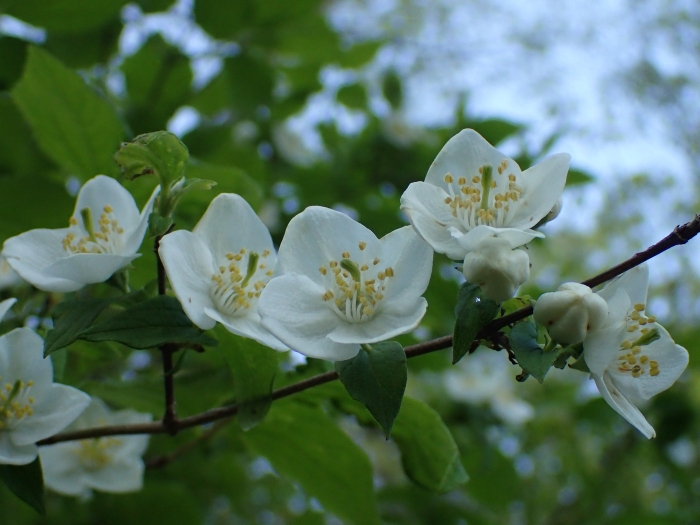Hairy Mock Orange
(Philadelphus hirsutus)
Hairy Mock Orange (Philadelphus hirsutus)
/
/

Evan M. Raskin
CC BY 4.0
Image By:
Evan M. Raskin
Recorded By:
Copyright:
CC BY 4.0
Copyright Notice:
Photo by: Evan M. Raskin | License Type: CC BY 4.0 | License URL: http://creativecommons.org/licenses/by/4.0/ | Rights Holder: Evan M. Raskin | Publisher: iNaturalist | Date Created: 2020-05-07T19:32:15-07:00 |






















Estimated Native Range
Summary
Philadelphus hirsutus, commonly known as Hairy Mock Orange, is a deciduous shrub native to the open woodlands and forest edges of the southeastern United States. It typically grows up to 6 feet in height and has a similar spread, featuring a rounded form with arching branches. The shrub is noted for its fragrant, showy white flowers that bloom in late spring to early summer, which are particularly attractive to pollinators. The bark is exfoliating, adding textural interest, especially in the winter months.
Hairy Mock Orange is appreciated for its sweetly scented blooms that can perfume an entire garden. It is often used in border plantings, as a specimen, or in naturalized areas where its informal appearance can be enjoyed. This shrub thrives in partial shade to full sun and prefers well-drained soils, though it is adaptable to various soil types. It is relatively low maintenance, requiring minimal pruning to maintain shape and remove any dead or damaged wood. While it is generally disease-resistant, it can occasionally suffer from leaf spot or powdery mildew. It is not known for aggressive roots or significant invasiveness issues.CC BY-SA 4.0
Hairy Mock Orange is appreciated for its sweetly scented blooms that can perfume an entire garden. It is often used in border plantings, as a specimen, or in naturalized areas where its informal appearance can be enjoyed. This shrub thrives in partial shade to full sun and prefers well-drained soils, though it is adaptable to various soil types. It is relatively low maintenance, requiring minimal pruning to maintain shape and remove any dead or damaged wood. While it is generally disease-resistant, it can occasionally suffer from leaf spot or powdery mildew. It is not known for aggressive roots or significant invasiveness issues.CC BY-SA 4.0
Plant Description
- Plant Type: Shrub
- Height: 5-10 feet
- Width: 5-10 feet
- Growth Rate: Slow, Moderate
- Flower Color: White
- Flowering Season: Spring, Summer
- Leaf Retention: Deciduous
Growth Requirements
- Sun: Full Sun
- Water: Medium
- Drainage: Medium
Common Uses
Bird Garden, Butterfly Garden, Fragrant, Low Maintenance
Natural Habitat
Open woodlands and forest edges in the southeastern United States
Other Names
Common Names: Hairy Mock Orange, Hairy Philadelphus
Scientific Names: , Philadelphus hirsutus, Deutzia godohokerii, Deutzia sanguinea, Philadelphus columbiensis, Philadelphus dubius, Philadelphus godohokeri, Philadelphus godohokeri, Philadelphus godokokeri, Philadelphus gracilis
GBIF Accepted Name: